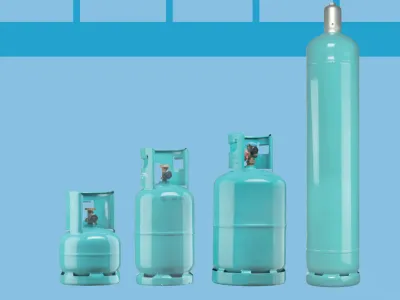Refrigerant classification
The ISO 817 and ANSI / ASHRAE 34 standards are safety classifications for refrigerants.
The toxicity rating is divided into two groups, Low Toxicity A and Low Toxicity B.
The flammability of a refrigerant is divided into four categories according to these standards, with Class 1 being virtually incombustible under most conditions of use. R 410A and R 22 both in Class 1 are considered virtually non-combustible.
Class 2L (L = low) is considered to be low flammability, classified as having low combustion rate and having lower heat of combustion. Class 2 and Class 3 designate flammable and highly flammable refrigerants. R 152a is a class 2 refrigerant, while the hydrocarbons (propane, butane) are classified as highly flammable class 3 refrigerants.
ISO 817 Refrigerant Classification Scheme

Safety Classes for Refrigerants
Safety classes for refrigerants are categorized based on their flammability and toxicity:
- A1: Non-flammable and low toxicity
- A2L: Mildly flammable and low toxicity
- A3: Highly flammable and low toxicity
- B2L: Mildly flammable and higher toxicity
Examples of Refrigerants and Their Safety Classes
Natural Refrigerants:
- R744 (CO2): A1
- R717 (Ammonia): B2L
- R290 (Propane): A3
- R600a (Isobutane): A3
Synthetic Refrigerants:
- R404A: A1 (Banned in the EU since 2020 under F-Gas Regulation)
- R410A: A1 (No long-term future)
- R134a: A1 (Transitional refrigerant)
- R32: A2L (Suitable for transition)
- R1234yf: A2L (Future-proof)
- R1234ze: A2L (Future-proof)
- R407C: A1 (Suitable for transition)
- R448A: A1 (Transitional refrigerant)
- R449A: A1 (Transitional refrigerant)
- R513A: A1 (Transitional refrigerant)
The safety class of a refrigerant provides important information about its flammability and toxicity, which is crucial for safe handling and application in refrigeration and air conditioning systems.







